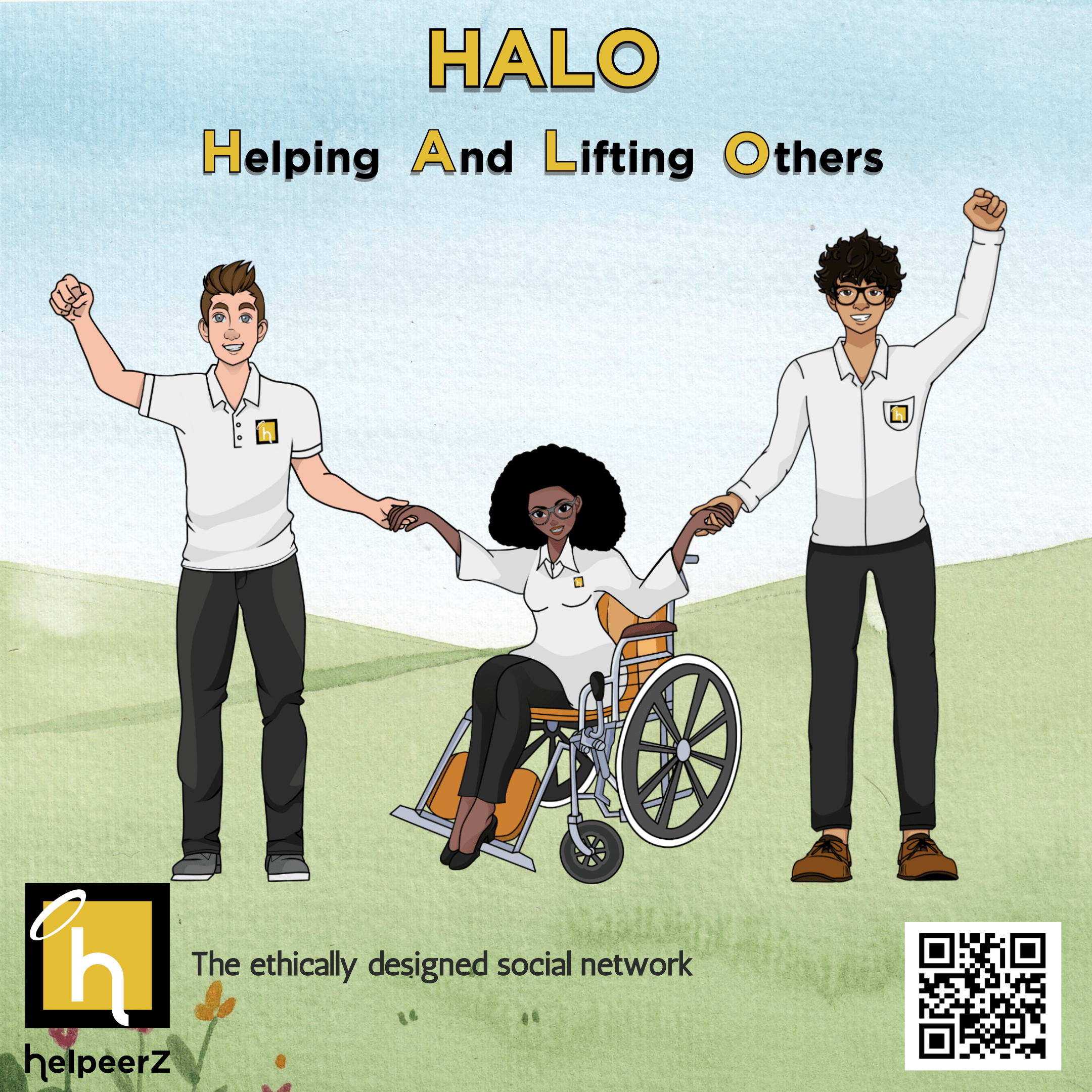the Halo
“We rise by lifting others.”- Robert Ingersoll
Editor
Chief Executive Officer, Helpeerz.com
Author
Artist

HelpeerZ was initially conceived as an employment app with the primary goal of addressing the issue of tracking and verifying the authenticity of the information provided in an applicant's resume. With this app, companies could quickly onboard employees who would make immediate positive impact or identify talents suitable for job training, ensuring effectiveness and preventing issues like job mismatches and incompetence.
To better enhance the app, our team came up with a new metric called HALO, which stands for Helping and Lifting Others. At HelpeerZ, we strongly believe that having each other's back fosters strengths and cultivates positive qualities and traits, among other benefits.
We decided to incorporate the graphic representation of a halo in our logo and use a metric scale to highlight our acronym, HALO. More importantly, we were inspired by Dr. Edward Thorndike’s study in 1920 about the “halo effect”, where he also used the halo as symbolism. Thorndike’s theory is that people tend to form an overall impression of a person based on unrelated traits that had to do with their physical attributes. People’s perceptions may be positive or negative but in either case, such subjective assessments can hinder one’s ability to think critically about the person in question.[1]
In his study, Thorndike had military officers assess their subordinates on traits like intelligence, leadership, and physical appearance. He found that ratings on one quality often affected ratings on others, despite their lack of connection. The correlations between physique and intelligence, leadership, and character were moderate but consistent (ranging between 0.28 and 0.39). Despite the lack of logical links between these attributes, the results indicate a significant impact of the halo effect, causing biased judgments based on superficial qualities.[2]
Additional studies confirm the existence of the halo effect. In Rey Hernández-Julián and Christina Peters’ study on student appearance and academic performance, they found that students perceived as attractive tend to get higher grades in comparison to those deemed less visually appealing.[3] In Matt Parrett’s paper on the effect of beauty on the earnings of servers, he found that more attractive servers earn about $1200 more per year than unattractive servers.[4]
In Michael G. Efran's study, "The effect of physical appearance on the judgment of guilt, interpersonal attraction, and severity of recommended punishment in a simulated jury task," the findings from a simulated jury task revealed that physically attractive defendants received evaluations with lower certainty of guilt, less severe recommended punishment, and lower levels of attraction compared to their unattractive counterparts.[5]
Since its introduction a century ago, there is still a lack of a significant tool to address the halo effect. Our solution to this challenge is the creation of a platform like HelpeerZ. On this platform, people can engage in collaborative projects for personal, academic, career, business, and community growths. The aim is to generate tangible evidence of one's capabilities, serving as a benchmark that goes beyond superficial judgments and contributes to holistic assessments of individuals.
At HelpeerZ, we aim to correct this human error by providing reliable evidence to improve decision-making. Our goal is to establish a metric that reduces, if not eliminates, cognitive biases in both real-world and digital contexts through our platform. This evidence will primarily stem from an individual’s accomplished projects and their outcomes. Furthermore, project stakeholders can award halos to their colleagues who have provided them learning opportunities or have been beneficial to the project.
HALO, our novel metric, will empower users to form more logical judgments of individuals and organizations. This metric can assist people in enhancing their decision-making when selecting a job applicant, a candidate running for public office, a grant recipient and a potential business or life partner.
Come and join us today! Let’s unite and get involved in meaningful projects. Let’s grow, exercise sound judgment, and change the world together.
References:
[3] Hernández-Julián, R., & Peters, C. (2017).
Student Appearance and Academic Performance.
Journal of Human Capital: , 247-262
Student Appearance and Academic Performance.
Journal of Human Capital: , 247-262
[4] Parrett, M. (2015).
Beauty and the feast: Examining the effect of beauty on earnings using restaurant tipping data.
Journal of Economic Psychology: , 34-46
Beauty and the feast: Examining the effect of beauty on earnings using restaurant tipping data.
Journal of Economic Psychology: , 34-46
[5] Efran, M. G. (1974).
The effect of physical appearance on the judgment of guilt, interpersonal attraction, and severity of recommended punishment in a simulated jury task.
Journal of Research in Personality: , 45-53
The effect of physical appearance on the judgment of guilt, interpersonal attraction, and severity of recommended punishment in a simulated jury task.
Journal of Research in Personality: , 45-53

